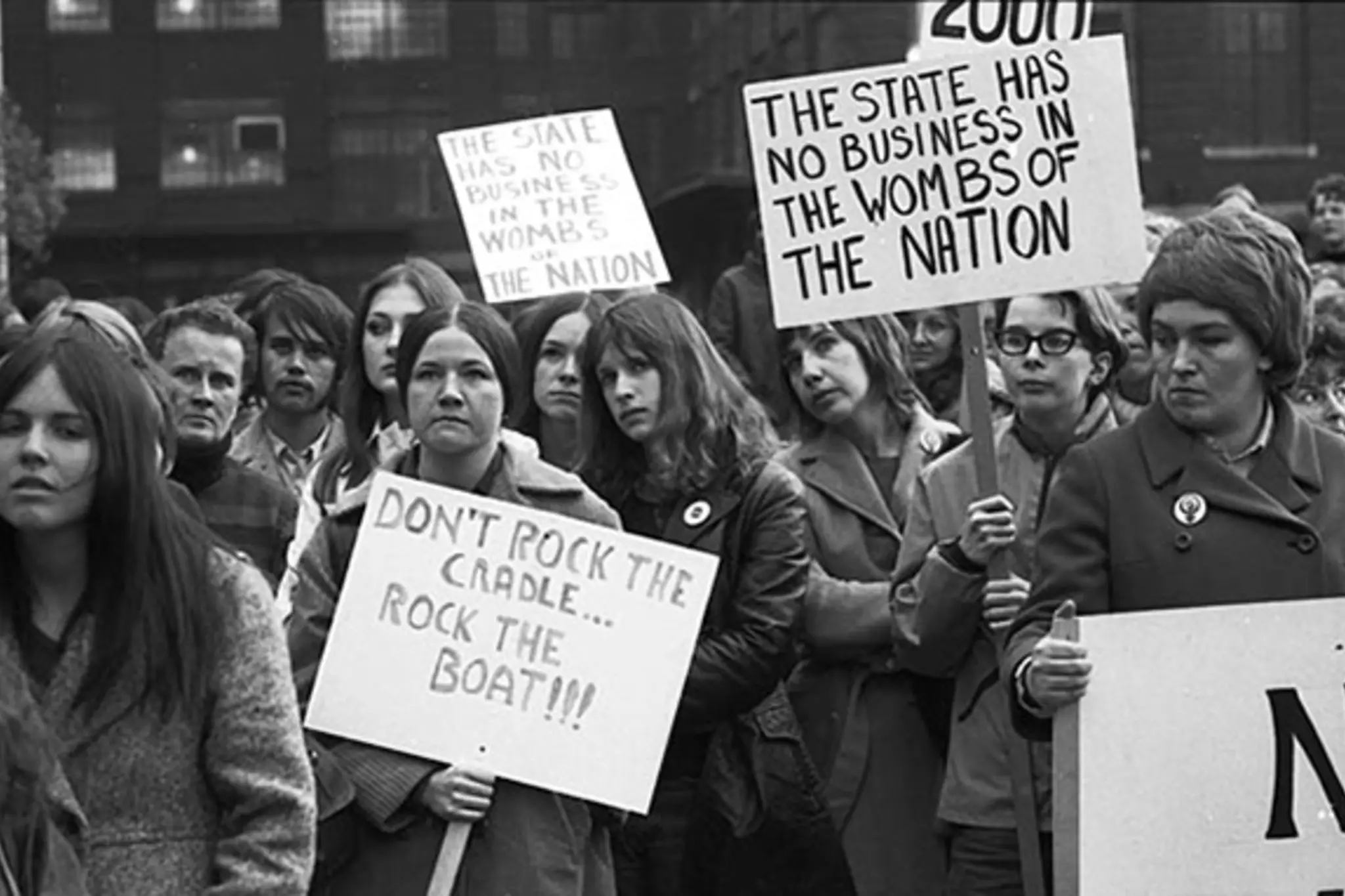
York University Libraries, Clara Thomas Archives and Special Collections, Toronto Telegram fonds, ASC04612
Written by guest blogger Shannon Stettner.
Years are important in the learning and retelling of history. Years act as signposts. We memorialize years, commemorating anniversaries of events, measuring distance from alleged turning points. But perhaps, as historians, we rely too heavily on pointing to one moment or event as pivotal to the stories we tell. When Katrina Ackerman and I were invited to reflect on the 1969 omnibus changes, some fifty years later, we were asked to consider the extent to which 1969 could be perceived as a turning point in abortion history. Ultimately, we argued that it wasn’t as significant a moment as it has been assigned. In the same issue, Tom Hooper argues this point powerfully when he shows that the so-called decriminalization of homosexuality in the omnibus bill actually led to increased policing of homosexuality, exposing the myth of 1969 as a liberalizing moment for LGBTQ+ Canada and forcing us to rethink and counter that narrative.
In our reflection, Katrina Ackerman and I ask what abortion history might look like if we decentred “milestone legislation” like the omnibus bill. How might history be organized then? I have some further thoughts on what this decentering of legislation could look like and believe that we can approach abortion history from multiple perspectives and through numerous lenses that will produce a more complicated narrative. Perhaps the evolution of medical technology could serve as one guide for analyzing abortion history. The creation of ultrasound technology, for example, has had a tremendous impact on how society viewed pregnancies both in terms of the personification of the fetus and the diagnosis of fetal anomalies.[1] Certainly, the evolution of abortion techniques is also important. We note, for example, that Morgentaler’s use of vacuum suction curettage with local instead of general anaesthetic meant that abortions could be provided in private clinics and not just hospitals, changing the landscape of access. Today, the (theoretical) availability of the abortion pill Mifegymiso means that abortions can move from doctors’ offices, clinics, and hospitals to private homes, again altering the nature of many abortion experiences and assisting those who were previously unable to travel for abortions.
We could also organize abortion history by looking at the evolution of activism on both sides of the issue. I have argued elsewhere for the importance of defining activism broadly to include not just public protests, but to view letter-writing as an important act of protest.[2] How does interpreting activism more broadly change how we view the beginning and evolution of the pro-choice and anti-abortion movements? The question of what we count as activism is an important consideration for historians to continue to grapple with because as activism increasingly moves online it changes the nature of the sources we examine; it also raises concerns about the preservation of such sources for future study.[3]
Another important way of telling abortion history is through personal abortion experiences. As we note in our reflection, the enactment of birth control and abortion laws did not change people’s efforts to control their fertility. Perhaps this point prompts the greatest reflection about the ways in which we rely on benchmark dates to inform the histories we tell. There are multiple examples of people defying what they perceived as unjust and antiquated birth control and abortion laws. Such behaviour did not change with the enactment of the 1969 omnibus bill (although abortion access for some people would have improved). When the actions of historical actors refute the significance of a date, such as 1969, it should cause us pause to carefully consider what we think of as defining moments and why. The 1969 Omnibus Bill is a convenient marker in Canadian abortion history, but we should be aware that there are other factors that may more accurately reflect and shape the contours of Canadian abortion history.
Notes
[1] The impact of ultrasound technology on pregnancy has been written about exhaustively. A brief introduction to the topic can be found in Jen Rinaldi, “The Public Pregnancy,” ed. Shannon Stettner, Without Apology: Writings on Abortion in Canada (Athabasca University Press: 2016): 305-315.
[2] See, Shannon Stettner, “‘He is still unwanted’: Women’s Assertions of Authority over Abortion in Letters to the Royal Commission on the Status of Women in Canada,” Canadian Bulletin of Medical History 29.1 (2012): 151-171; Shannon Stettner and Bruce Douville. “‘In the image and likeness of God’: Abortion Law Reform and Religion in Letters to the Editors of Canadian Newspapers in the Sixties.” Journal of Canadian Studies 50.1 (Winter 2016): 179-213.
[3] Historians have been actively discussing this and related issues of preserving and using online sources. For a recent contribution, see, for example, Ian Milligan, History in the Age of Abundance?: How the Web is Transforming Historical Research (McGill-Queen’s University Press, 2019).
Shannon Stettner is a historian of reproductive health history in Canada. Her books include: Without Apology: Writings on Abortion in Canada and Abortion: History, Politics, and Reproductive Justice after Morgentaler. She is precariously employed in the Department of Women’s Studies at the University of Waterloo. Her articles in the Canadian Historical Review entitled “‘The Public Is Not Ready for This’: 1969 and the Long Road to Abortion Access” is free to read for a limited time here.
Comments on this entry are closed.